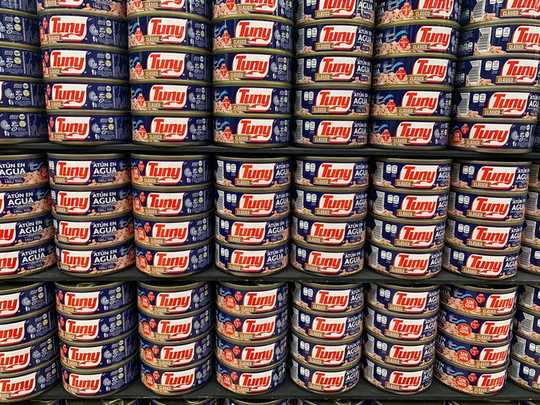A recent study found that brown and organic rice sold in the UK tends to contain significantly more arsenic than white inorganic varieties that are often considered less healthy. Arsenic is found in many foods but can be especially concentrated in rice, particularly in the husk, which is removed to produce white rice but retained in brown rice.
Consuming too much arsenic over a long period is thought to be dangerous because it can cause cancer. Yet brown rice is usually considered healthier than white because of the extra fibre and vitamins it contains. Organic rice is less likely to have been exposed to pesticides.
Ascertaining exactly what a healthy diet consists of can be full of these apparent paradoxes. Should you eat brown rice for the fibre or white rice for the lower arsenic levels? The answer shows the potential difficulties of using studies like the one cited above to guide dietary choices and the need to fully understand the complexities of nutrition and dietary choices.
Arsenic in rice
For adults, the reality is that even eating one kilogram of cooked brown rice a day is unlikely to cause the consumption of too much arsenic. Also because brown rice is a wholegrain, eating it will also supply you with more fibre (a nutrient very few UK adults reach the recommended 30g per day of), as well as wide range of vitamins, minerals and essential fatty acids.
Get The Latest By Email
Children under five are more at risk of consuming too much arsenic from rice but a varied diet and avoiding rice drinks should mitigate this. You can also reduce arsenic in rice by up to 80% by rinsing it and cooking it in copious amounts of water.
Mercury in fish
Some varieties of fish can also contain significant amounts of mercury, specifically methylmercury, which can be toxic to humans, causing kidney damage and affecting foetal and infant brain development. Levels of methylmercury can be particularly high in fish that eat other fish, such as shark, swordfish, marlin and tuna.
The European Food Safety Authority says up to 1.3 micrograms of methylmercury per kg of bodyweight per week is a safe amount. For a typical 90kg adult that equals 117mcg a week. The amount of methylmercury in a single portion of fish in this category can vary hugely but EU rules mean 1kg should contain no more than 500mcg.
For the most commonly eaten type of fish in this category, tinned tuna, a 100g drained tin could contain as much as 50mcg of methyl mercury. So eating more than two tins a week could theoretically put you at greater risk. Shark, swordish and marlin tend to contain more mercury so more caution is advised here, and you should avoid them if you are pregnant.
 You’d have to eat a lot of tuna to be harmed by its mercury content. Mikel Dabbah/Shutterstocks
You’d have to eat a lot of tuna to be harmed by its mercury content. Mikel Dabbah/Shutterstocks
But most tins of tuna aren’t likely to contain the maximum allowed amount of mercury and reports of bodybuilders and other tuna enthusiasts becoming ill with mercury poisoning are rare.
Meanwhile, fish contributes to a healthy Mediterranean-style diet linked to lower chances of type 2 diabetes, high blood pressure and raised cholesterol. Oily fish (such as sardines, mackerel, salmon, trout or herring) are particularly beneficial in this respect and contain nutrients important for foetal and early infancy brain development. So most adults who eat fish are advised to aim for at least two portions a week including at least one type of oily fish.
Pesticides in vegetable skins
It’s well established that the peels and skins of fruit and vegetables are an important source of fibre, helping to maintain digestive health and control blood glucose levels. These outer layers also tend to contain more vitamin C, minerals and other beneficial “phenolic” compounds than the flesh.
But there is also some concern that pesticides used to treat seeds, growing plants or harvested crops can collect in particularly high concentrations in skins, although the actual amounts vary hugely. Some people argue you should peel your fruits and vegetables as a result.
But the actual amounts of pesticide residue that can be found in fruit and veg is limited. The UK government’s most recent research on the issue only found samples that exceeded the maximum legal pesticide residue level in a small number of samples in four out of 14 types of fruit and vegetables tested.
The World Health Organization says: “None of the pesticides that are authorised for use on food in international trade today are genotoxic” (damaging to DNA, which can cause mutations or cancer).
Someone with a healthy or high bodyweight and/or a varied diet is very unlikely to be exposed to enough pesticide to breach this level. In contrast, the evidence for the benefits of eating fruits and vegetables including the skins is overwhelming. So it still seems prudent that we eat as much as we can and, where possible and palatable, consume the skins.
These examples underline why the “everything in moderation” we often see in healthy eating guidelines really does seem to be the best approach. The more types of food we eat, the less of each we consume and therefore we can reduce the chance of doing ourselves harm from either too much or too little of something. But knowing what the safe limits are can help answer some of the more difficult questions about what’s the best food choice.![]()
About The Author
Ruth Fairchild, Senior Lecturer in Nutrition, Cardiff Metropolitan University
This article is republished from The Conversation under a Creative Commons license. Read the original article.
books_food








